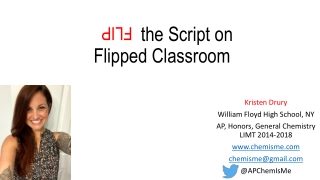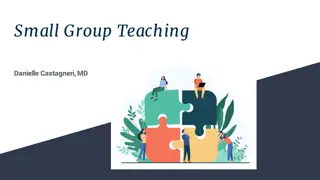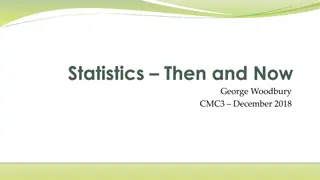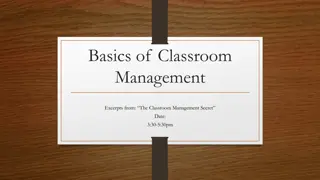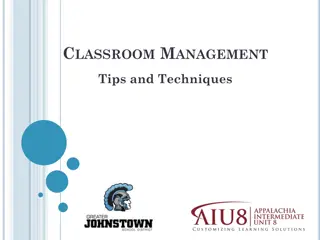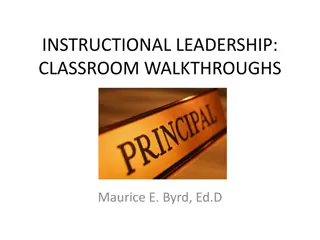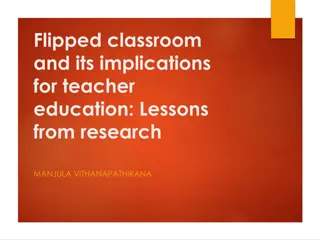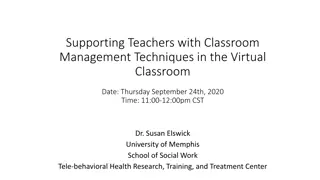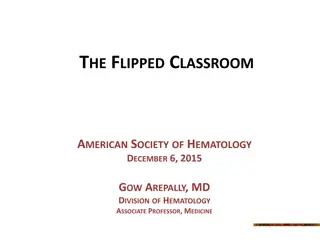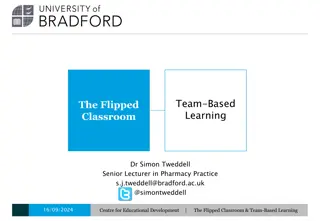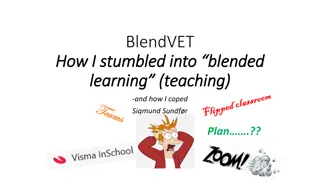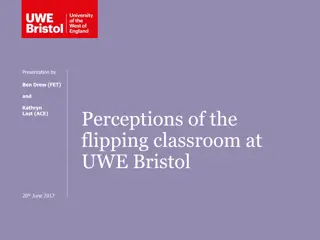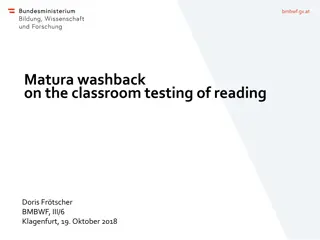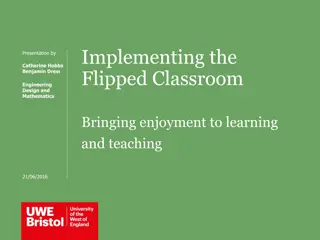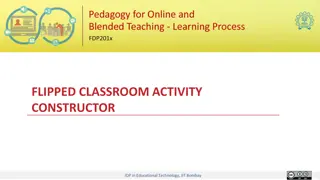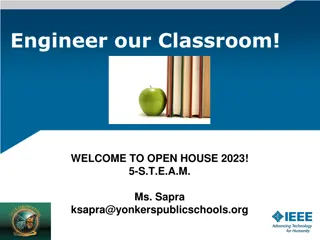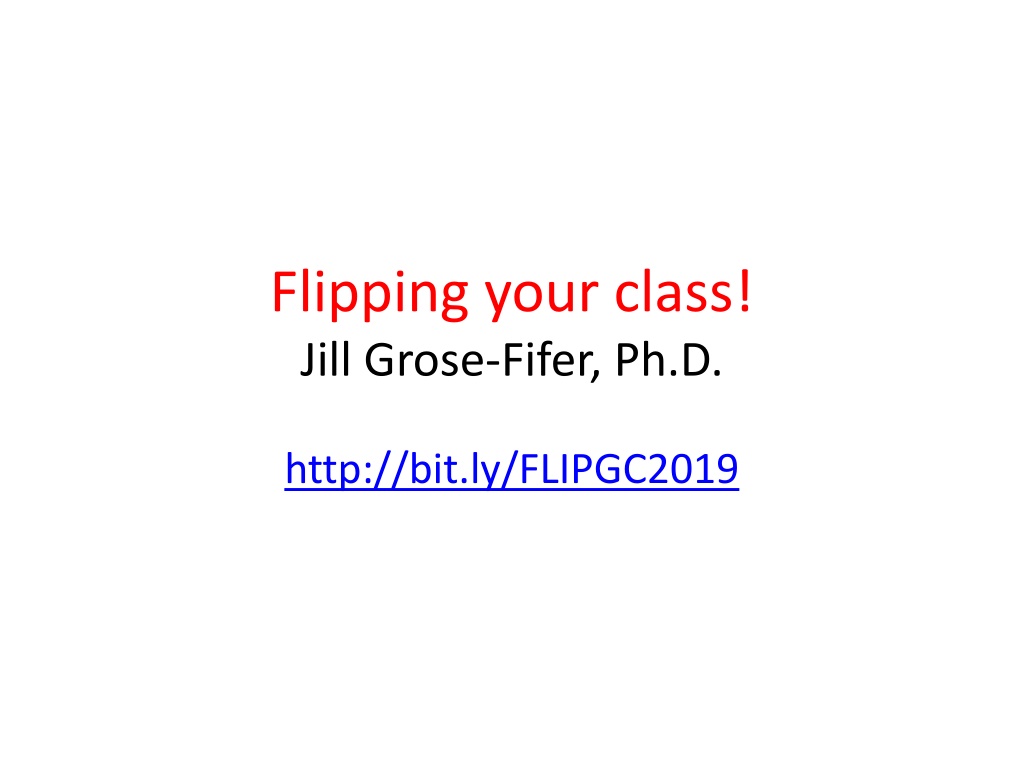
Innovative Strategies for Flipping Your Class
Explore the methodology of flipping your classroom with engaging activities such as in-class flips, self-paced learning homework, and collaborative assignments. Discover how to use videos effectively and enhance student evaluations through dynamic teaching techniques.
Download Presentation

Please find below an Image/Link to download the presentation.
The content on the website is provided AS IS for your information and personal use only. It may not be sold, licensed, or shared on other websites without obtaining consent from the author. If you encounter any issues during the download, it is possible that the publisher has removed the file from their server.
You are allowed to download the files provided on this website for personal or commercial use, subject to the condition that they are used lawfully. All files are the property of their respective owners.
The content on the website is provided AS IS for your information and personal use only. It may not be sold, licensed, or shared on other websites without obtaining consent from the author.
E N D
Presentation Transcript
Flipping your class! Jill Grose-Fifer, Ph.D. http://bit.ly/FLIPGC2019
In Class Flipped classes change where these activities take place
Homework Self-paced learning
Homework Compliance 80% 60% 40% 20% 0% Textbook Video
Group A: Flipped - video homework http://bit.ly/ORIHEART Work individually Make a heart following along with video
Group A video http://bit.ly/ORIHEART Group B: Lecture How to make an origami heart Take a square of paper and fold it in half diagonally. Open it up and then fold it the other way diagonally. Open it up. Position the paper like a diamond Take the top edge to the middle of the paper and fold Take the bottom edge to the top and fold. Take right half of bottom edge and fold so that it lines up with the crease in the center Repeat on the left Flip the paper over and fold the two top triangles in half (so they meet the top of the paper) 10. Fold the left corner in 11. Fold the right corner in 1. 2. 3. 4. 5. 6. 7. 8. 9.
Assignment Group A collaborate; Group B individual Make an origami heart What might you use this for? If you had more than one, what could you make with them? Useful, beautiful, or both.
Nuts and Bolts Study guide Qs 5 Q online quiz
Course Evaluations 95% 90% 85% Pre Post
% of students passing with C or better 80% 75% 70% 65% Pre Post
Videos Make 10 minute videos where possible Use headphones with microphone Screen-cast-o-matic (demos) http://bit.ly/SCASTOM Narrated Powerpoint (MAYER) http://bit.ly/NAR_PPT Host on Vimeo, YouTube (unlisted) Post URL in Blackboard
In-class activities 1) Solving authentic, complex problems Problem-based learning Spencer STP Kreiner STP (Sensation and Perception) National Center for Case Study Teaching in Science (NCCSTS) 2) Skill development Writing Workshops (Grose-Fifer & Davis-Ferreira, 2018). Information Literacy Workshops (Brooks & Brodsky, 2018) Scientific Literacy - experiments APA s Online Psychology Library https://opl.apa.org Krantz website Hanover College https://psych.hanover.edu/JavaTest/Media/ESP.html Krantz & Schwartz Interactive Sensation Laboratory Exercises https://isle.hanover.edu Faculty for Undergraduate Neuroscience www.funfaculty.org/drupal/node/2339 PSYTOOL KIT https://psytoolkit.org great for RT 3) Applying concepts/theories to understand behavior, thoughts, feelings Gestalt Principles in advertising PPT and worksheet 4) Role-play (Grose-Fifer, 2017) http://bit.ly/FLIPGC2019
STACIE SPENCER Problem-based Learning Example https://teachpsych.org/Resources/Documents/otrp/resources/spencer15.docx. Jonas Lamb was recently diagnosed with bipolar disorder. He is concerned about telling others due to the stigma attached to mental illness. He does not want to be treated differently because of his diagnosis. On the other hand, he wonders if telling others would help de-stigmatize mental illness. His mother says mental illness does not carry the stigma that it once did and tells him not to worry about it. Make a recommendation as to whether or not Mr. Lamb should avoid telling others about his diagnosis because of associated stigma or if telling others is likely to help de-stigmatize mental illness. STUDENT RESOURCES Corrigan, P. W., Morris, S. B., Michaels, P. J., Rafacz, J. D., & R sch, N. (2012). Challenging the public stigma of mental illness: A meta-analysis of outcome studies. Psychiatric Services, 63, 963 973. http://dx.doi.org/10.1176/appi.ps.201100529 Schomerus, G., Schwahn, C., Holzinger, A., Corrigan, P. W., Grabe, H. J., Carta, M. G., & Angermeyer, M. C. (2012). Evolution of public attitudes about mental illness: A systematic review and meta-analysis. Acta Psychiatrica Scandinavica, 125, 440 452. http://dx.doi.org/10.1111/j.1600-0447.2012.01826.x
Resources for PBL & Team-based Learning Norton, L. (2004). Psychology Applied Learning Scenarios (PALS): A practical introduction to problem- based learning using vignettes for psychology lecturers Retrieved from https://www.heacademy.ac.uk/system/files/psychology-applied-learning-scenarios.pdf Papageorgiou, A., McCrorie, P., Georgiades, S. & Perdikogianni, M. (2015). Psychology for psychologists: A problem-based approach to undergraduate psychology teaching. . London: Palgrave. Problem-based Learning at the University of Delaware. http://www1.udel.edu/inst/resources/sample-problems.html Spencer, S.M. (2015). Instructor materials for teaching Research Methods using a consulting model. Retrieved from the Society of Teaching of Psychology's website https://teachpsych.org/Resources/Documents/otrp/resources/spencer15.docx. Yandell, L. R., & Giordano, P. J. (2008). Exploring the use of Problem-Based Learning in psychology courses. In S. Meyers & J. Stowell (Eds.), Essays from e-xcellence in teaching, Volume 8 (pp. 8-12). Retrieved from the Society for the Teaching of Psychology website https://teachpsych.org/ebooks/eit2008/index.php Team-based learning video https://ciel.viu.ca/teaching-learning-pedagogy/engaging-your-students/learning-through- teams/what-team-based-learning-quick-guide-busy-faculty-members PBL at JMP video https://www.youtube.com/watch?v=xvzAm72yWvs IF-AT cards used in Team-based learning http://www.epsteineducation.com/home/about/default.aspx groups-
Other Resources Ak ay r, G., & Ak ay r, M. (2018). The flipped classroom: A review of its advantages and challenges. Computers & Education, 126, 334-345. Brooks, P.J. & Brodsky. J.E. (2018). Combating Fake News: Teaching Tips for General Education Courses. https://teachpsych.org/page-1784686/6904536 Grose-Fifer, J. (2017). Using role play to enhance critical thinking about ethics in psychology. In R. Obeid, A. M. Schwartz, C. Shane-Simpson, & P. J. Brooks (Eds.) How we teach now: The guide to student-centered teaching. Retrieved from the Society for the Teaching of Psychology web site: http://teachpsych.org/resources/Documents/ebooks/gstaebook.pdf Grose-Fifer, J., Brooks, P.J., & O Connor, M. (2019). Teaching Psychology: An evidence-based approach. New York, NY: John Wiley and Sons. USE CODE C2020 at Wiley.com to get 20% off, exp 12/31/2019 Grose-Fifer, J., & Davis-Ferreira, C. (2018). Improved student outcomes in biological psychology courses through scaffolded reading and writing assignments. In T. Kuther (Ed.), Integrating writing into the college classroom. Strategies for promoting student skills. Retrieved from the Society for the Teaching of Psychology website: http://teachpsych.org/ebooks/integratingwriting Kreiner, D. S. (2009). Problem-based group activities for teaching Sensation and Perception. Teaching of Psychology, 36(4), 253-256. http://www.apadiv2.org/resources/Documents/otrp/resources/kreiner09.pdf Mayer, R. E. (2014). Research-based principles for designing multimedia instruction. In V. A. Benassi, C. E. Overson & C. M. Hakala (Eds.), Applying Science of Learning in Education: Infusing Psychological Science into the Curriculum. Retrieved from the Society for Teaching of Psychology website: http://teachpsych.org/ebooks/asle2014/index.php National Center for Case Study Teaching in Science (NCCSTS). http://sciencecases.lib.buffalo.edu/ GSTA

